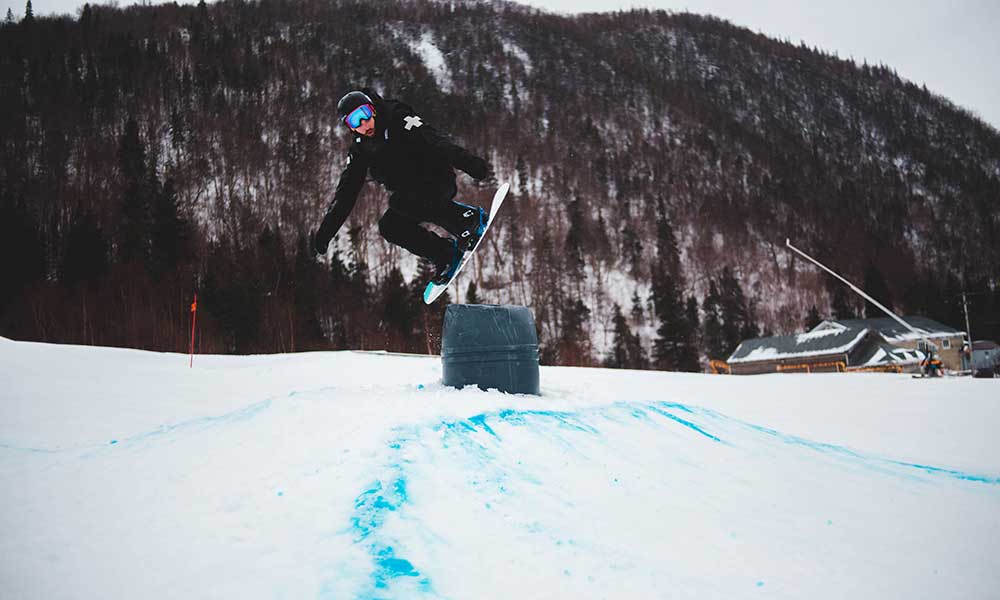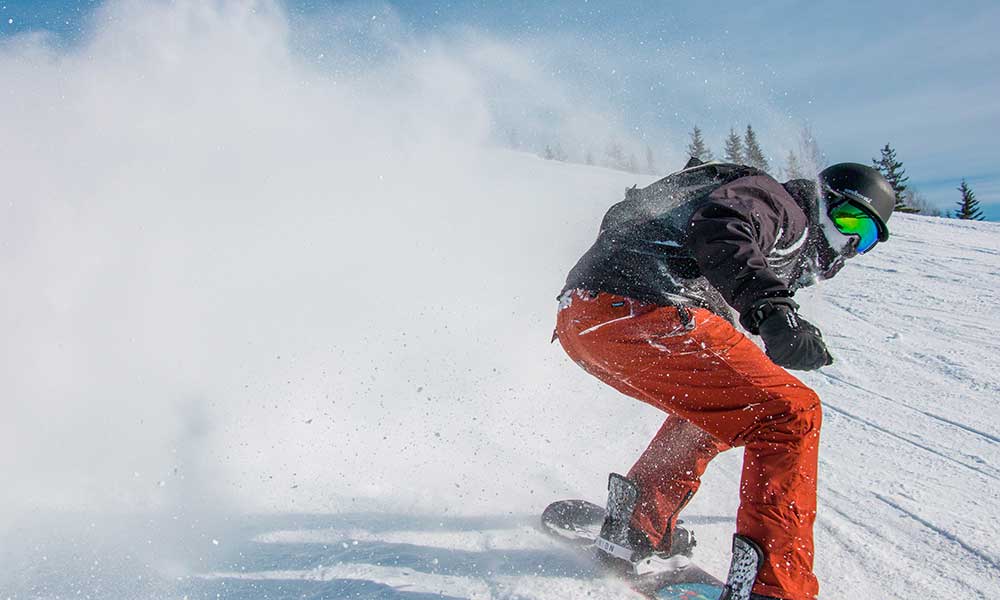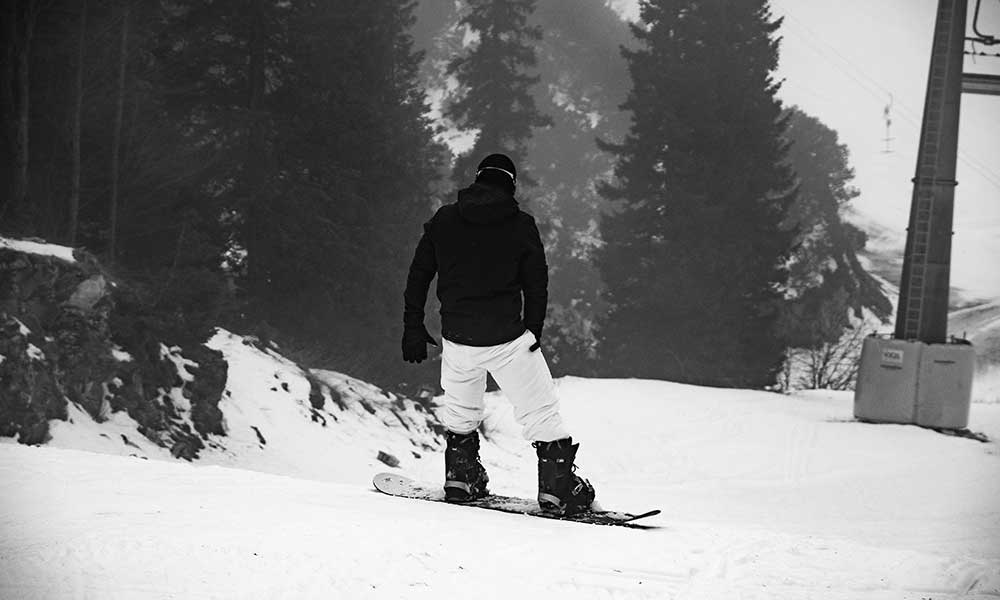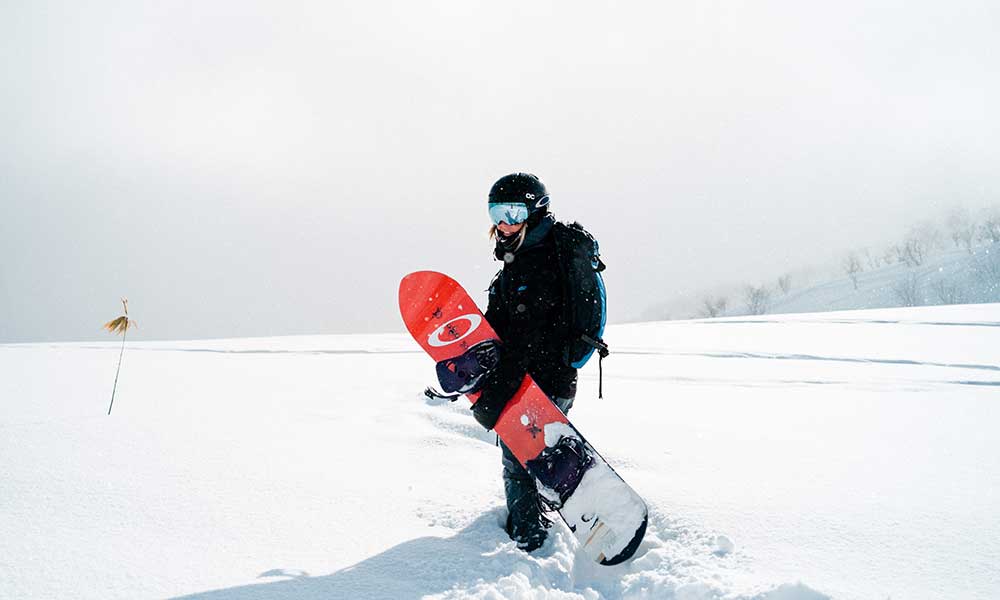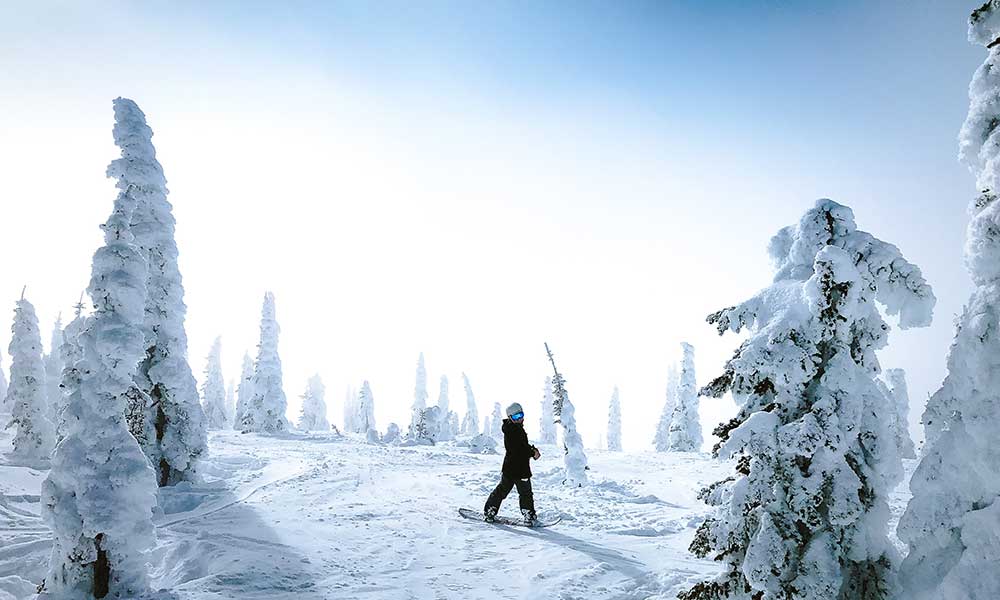Avalanches are one of the most destructive forces in nature. At best, they could ruin your day; at worst, they could bury you in a mountain of snow and end your life.
They’re not something that you should be taking lightly. In this guide, we’ll show you how to avoid avalanches and protect yourself when they hit.
How to Survive an Avalanche
Avalanche survival hinges on proper preparation and adequate education. It all starts before you hit the slopes, but you also need to know the tricks and techniques that could save you when the avalanche starts.
1. Check the Risks Before You Leave
The best way to survive an avalanche is to avoid them in the first place.
Check the avalanche forecast on Avalanche.Org. It was developed as a joint effort between the American Avalanche Association and the Forest Service and will warn you about potential avalanche events in your area.
We can’t know for sure when an avalanche will happen, but the conditions in which they occur can be predicted with a high degree of accuracy.
2. Buy the Right Gear
If you’re worried about avalanches, consider purchasing an avalanche beacon. These tools will pinpoint your exact location and let your team/friends know where you are in the event you’re covered by snow.
The best ones, including the BCA Tracker 2 Avalanche Beacon from Amazon, also come with an avalanche probe that you can use to determine the depth at which someone is buried under the snow.
You should also purchase a collapsible Avalanche Shovel, such as this one from Ortovox. The avalanche tracker will tell you where they are, the probe will determine the depth of the snow, and you can use the shovel to start digging them out.
Everyone in your party must have this equipment.
3. Educate Yourself
Know the warning signs, learn the procedures, and make sure everything is firmly planted in your memory. That way, you can act quickly and properly, as opposed to wasting those split seconds trying to remember what you should be doing.
Take a class, watch some videos, practice using the avalanche receiver and shovel, and make sure you know exactly what to do in an emergency.
4. Don’t Try to Outrun It
Let’s make one thing clear: You’re not James Bond and your life is not an action film.
We’re sorry to break it to you, but it’s true, and if you try to out-ski an avalanche, à la 007, you’ll end up head-high in hardening snow.
It doesn’t matter how fast you go or how fast you think you can go; avalanches can travel at up to 200 miles per hour.
Even Usain Bolt isn’t out-running that.
If you are caught in an avalanche, move to the side. It means you won’t be trapped in the middle, thus increasing your chance of escape.
If the avalanche occurs underneath you, try to move above the fracture line and head upslope.
5. Hold On and Swim
If there is a tree branch or boulder nearby, try to grab and hold on. These obstacles won’t help you much in a heavy avalanche, and you shouldn’t waste time trying to grab them, but in smaller avalanches, they could be just what you need.
Swimming with the current of the avalanche can help in larger cascades. The goal is to stay on top of the avalanche and avoid being buried underneath.
Once you’re caught in the flow, the goal is not to bring yourself to a stop but to make sure you’re not buried underneath.
6. Hold Up an Arm and Make Room
Hold one arm or pole up, if you can. It’s much easier for a rescue team to find a buried person if they can see their arm or equipment thrust through the snow.
Fill your lungs with air and when the avalanche stops, try to dig around to create an air pocket. A small pocket of air could be enough to keep you alive for 20+ minutes, potentially enough time for rescuers to find you.
7. Remain Calm
Staying calm is easier said than done when you’re buried under an avalanche, but it will help to conserve energy and air, increasing your chances of survival.
How to Free Someone Caught in an Avalanche
If your friend is caught in an avalanche, follow these steps to aid with your rescue efforts:
- Don’t Take Your Eyes Off Them: As soon as you see someone caught in an avalanche, don’t let them out of your sight. Check to see if they stay afloat and look for any signs that will help you locate their position as you get closer.
- Wait: Make sure the avalanche danger has passed before you approach.
- Use the Beacon: If you have an avalanche beacon, now’s the time to use it. All members of your party should have an avalanche transceiver, and this is when you must turn it on.
- Listen: As you approach, listen for the victim. If they are alive, they’ll probably be calling out for help.
- Probe: Probe the area where you think or know they are. Mark their location by leaving the probe in the snow.
- Shovel: Start digging, being sure to dig downhill and toss the snow downhill. Dig quickly, as they will have limited air.
- Uncover the Head: Try to uncover their head first, allowing them to breathe. If they are having issues, give them CPR.
- Send For Help: If they can’t move once their head and upper body have been uncovered, send for help. You may injure them if you try to move them.
How Many People Die in Avalanches?
In many ways, avalanches are to skiers and snowboarders what shark attacks are to surfers and bodyboarders. It’s something that’s an ever-present threat, and you need to be prepared, but the odds of you encountering one are slim.
What might surprise you, however, is that avalanches kill far more people than sharks, especially in the United States.
Take 2020/21 as an example. Between late December 2020 and mid-May 2021, there were a total of 37 avalanche deaths in the United States. In all of 2020, there were just three shark attack deaths. In fact, even if we extend the date range as far back as 2011, spanning 9 years to 2020, there were just 7 fatal shark attacks.
We don’t want to downplay those deaths, as every single fatality is a tragedy, but it’s quite noteworthy when you consider that many novice surfers fret about shark attacks but novice skiers often ignore the threat of avalanches.
Of those 2020/21 avalanche deaths, there were four incidents in which multiple lives were claimed. In February, at Bear Mountain, 3 climbers were caught, buried and killed; at Mill Creek Canyon, just 4 days later, 7 tourers were caught and 4 of them were killed.
FAQs About Surviving an Avalanche
If you still have a few questions about avalanche safety, check out the following FAQs.
What Are The Chances Of Surviving An Avalanche?
93% of avalanche victims will survive if they are recovered in the first 15 minutes. But the longer they remain buried, the less likely they are to survive.
If they have been buried for 45 minutes, for instance, there is around a one-in-four chance of survival. For individuals buried for longer than 90 minutes, the odds of surviving are slim-to-none.
Can You Dig Yourself Out Of An Avalanche?
Digging yourself out of an avalanche might sound easy, but once you’re buried underneath all that heavy snow, it’s a different matter entirely. It’s heavy, crushing, and you don’t have much room to breathe, let alone dig. You can certainly try to create some extra breathing room by digging with your hands, but there’s very little chance of digging yourself out with a shovel.
What Kills You In An Avalanche?
Asphyxiation is the biggest killer in avalanches. The snow literally buries them alive and if they don’t have a large enough air pocket, they will run out of air very quickly.
What Triggers An Avalanche?
Avalanches occur when a layer of snow collapses and cascades downhill. This collapse can be triggered by a number of things, including earthquakes, animals, and skiers.
Roughly 9 out of 10 avalanches are triggered by teams of skiers or snowboarders.
What Is In An Avalanche Kit?
An avalanche kit is a safety kit that comes with many of the accessories that we discussed above, including a transceiver, probe, and shovel. These tools are essential for survival and should be carried by every team member on every skiing trip.
Can You Out-Ski An Avalanche?
You can’t out-ski or outrun an avalanche. Instead, you should try to move perpendicular to the avalanche. That way, you’ll avoid the center and the worst of the damage.
Where Do Avalanches Occur?
Approximately 90% of avalanches occur on slopes of between 30 and 40 degrees, with most occurring on slopes of up to 50 degrees. They are common in both the United States and Canada.
In Europe, avalanches are most common in Switzerland, Austria, Italy, and France.


